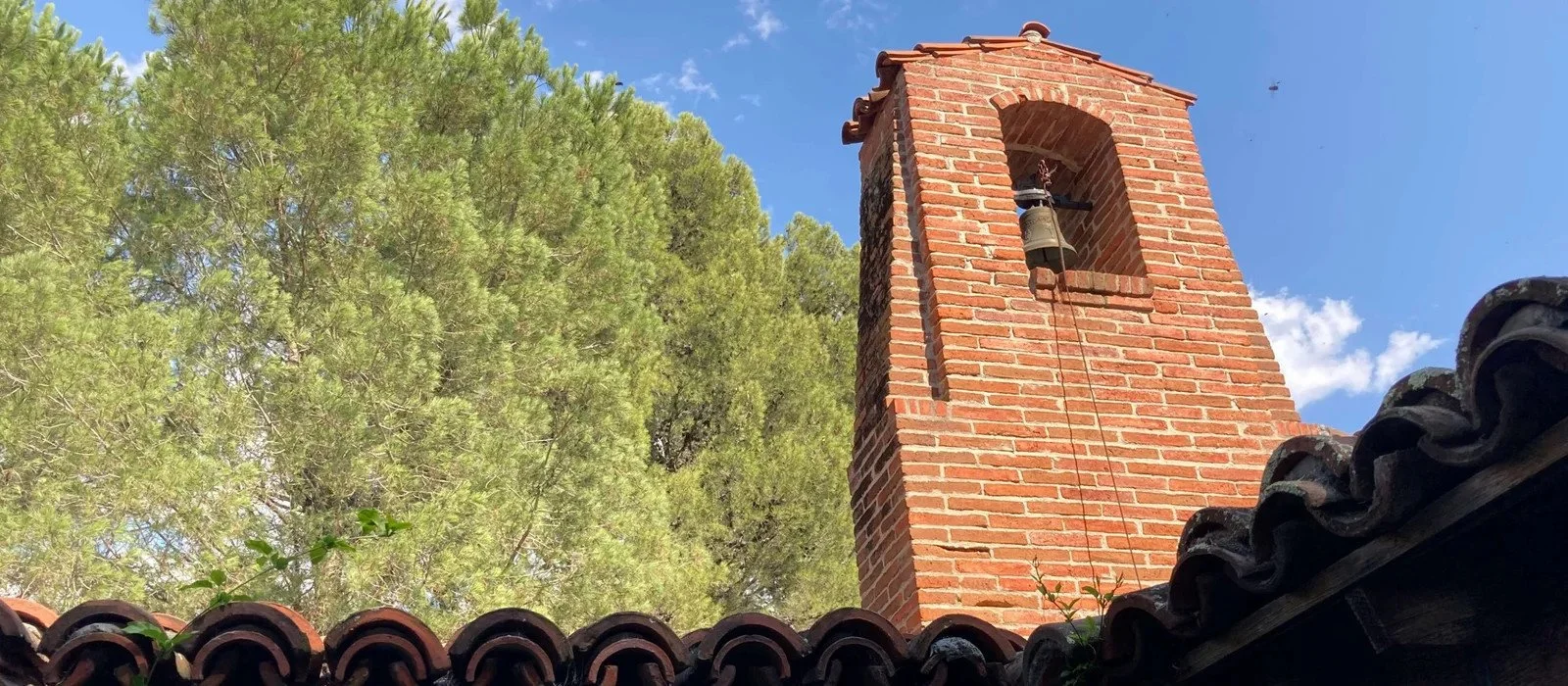Our Monastery
A branch of the Ramakrishna Order of India since 1949
Introduction
Although the Ramakrishna Monastery has celebrated over seventy years of existence, the Vedanta philosophy for which it was founded is ageless. Vedanta maintains that God is the abiding Reality of all things, and that the purpose of life is to experience that unchanging Reality. It seems fitting that such a lofty philosophy should have the peaceful setting of Trabuco Canyon for its practice. Removed from the stress of the outside world, its monks engage in a routine of meditation, physical work, and other spiritual disciplines prescribed for seekers of God.
Ramakrishna Monastery Founded
The Ramakrishna Monastery began as a dream. In 1939 Gerald Heard, an English writer and philosopher, conceived the idea of founding a religious institution devoted to the study and practice of the contemplative life. Although initially drawn to Christian mysticism and practices, Heard began a study of the Vedanta philosophy under the guidance of Swami Prabhavananda, founder of the Vedanta Society of Southern California, and was ultimately initiated by him.
Heard was also a dedicated pacifist and as World War II loomed on the horizon, he began his search for a peaceful location to build the institution he had envisioned. He discovered it in Trabuco Canyon, a then secluded area adjacent to the Cleveland National Forest some sixty miles south of Los Angeles. Construction of Trabuco College, as it was to be named, began in 1941; the College was completed and occupied the following year.
This bold experiment in living stirred tremendous interest among a number of serious intellectuals such as Aldous Huxley, John van Druten, Christopher Isherwood, and Eugene Exman, religious editor of Harper & Brothers Publishers. Seminars were held, three periods of meditation were observed in the octagonal shrine building, and various experiments in prayer made. In a short time the College was to build a fine library of mystical literature, much of which is still intact. Huxley was to make ample use of the library to write The Perennial Philosophy.
Heard’s noble experiment, however, was not to last. In 1947 financial problems and diminished activities forced Trabuco College to close its doors.
Ramakrishna Monastery Founded
Knowing the Vedanta Society was in need of a monastery, Heard generously offered the buildings and 300 acres of land to the Vedanta Society. On September 7, 1949 the monastery shrine was formally consecrated by Swami Prabhavananda, and the Ramakrishna Monastery was born. It bears the name of the great Indian mystic, Sri Ramakrishna (1836-1886), founder of the Ramakrishna Order of India, an active and flourishing brotherhood of monks with numerous monasteries and centers not only in India but throughout the world. The Ramakrishna Monastery is a branch of the Order.
The Vedanta movement westward began in 1893 with the arrival of Swami Vivekananda at the World’s Colombian Exposition as a representative of Hinduism. His energy and spiritual vision were soon to propagate the ideas of Vedanta throughout the United States and to other countries as well.
Although only a few men joined the Trabuco Monastery in the early years, the peace and solitude that the monastery offered were soon to draw others from various walks of life. Regardless of their backgrounds, all came with a similar purpose – to live a more fulfilling spiritual life in a community setting.
The Monastery Today
Today, the monastery is little changed. The shrine is still the center of life at the monastery and its sanctity is even more tangibly felt after seventy years of meditation and prayer.
The monastic routine begins with the ringing of the morning bell at 6 a.m. Meditation lasts from 6:30 a.m. – 7:30 a.m., followed by a hearty breakfast. Each monk works at various assigned tasks until stopping for noon worship. Afterward, the main meal is served, followed by a brief rest. The work routine continues until 5:30 p.m., when the monks prepare for vespers and evening meditation. A light supper follows. In the evening a reading from The Gospel of Sri Ramakrishna takes place in the library. After some light conversation, the monks retire for the night.
Public lectures by monks of the Order are held in the main refectory of the monastery at 11 a.m. on Sundays from mid – September through June. On July Fourth a special celebration is held to honor Swami Vivekananda, which attracts several hundred visitors each year.
Today, the monastery is little changed. The shrine is still the center of life at the monastery and its sanctity is even more tangibly felt after seventy years of meditation and prayer.
The monastic routine begins with the ringing of the morning bell at 6 a.m. Meditation lasts from 6:30 a.m. – 7:30 a.m., followed by a hearty breakfast. Each monk works at various assigned tasks until stopping for noon worship. Afterward, the main meal is served, followed by a brief rest. The work routine continues until 5:30 p.m., when the monks prepare for vespers and evening meditation. A light supper follows. In the evening a reading from The Gospel of Sri Ramakrishna takes place in the library. After some light conversation, the monks retire for the night.
Public lectures by monks of the Order are held in the main refectory of the monastery at 11 a.m. on Sundays from mid – September through June. On July Fourth a special celebration is held to honor Swami Vivekananda, which attracts several hundred visitors each year.
Vedanta recognizes the truth of all religions and accepts them as but different paths to the same goal. In recognition of this, the monks designed a mile-long trail along which shrines to the world’s major religions have been built. The walk takes about half an hour, and is notable for its scenic charm and serenity.
Visitors are welcome at the monastery during regular visiting hours: 9 a.m. – 11 a.m. and 3 p.m. – 5 p.m. daily. In keeping with the spiritual atmosphere of the Monastery, suitable dress and demeanor are required.






